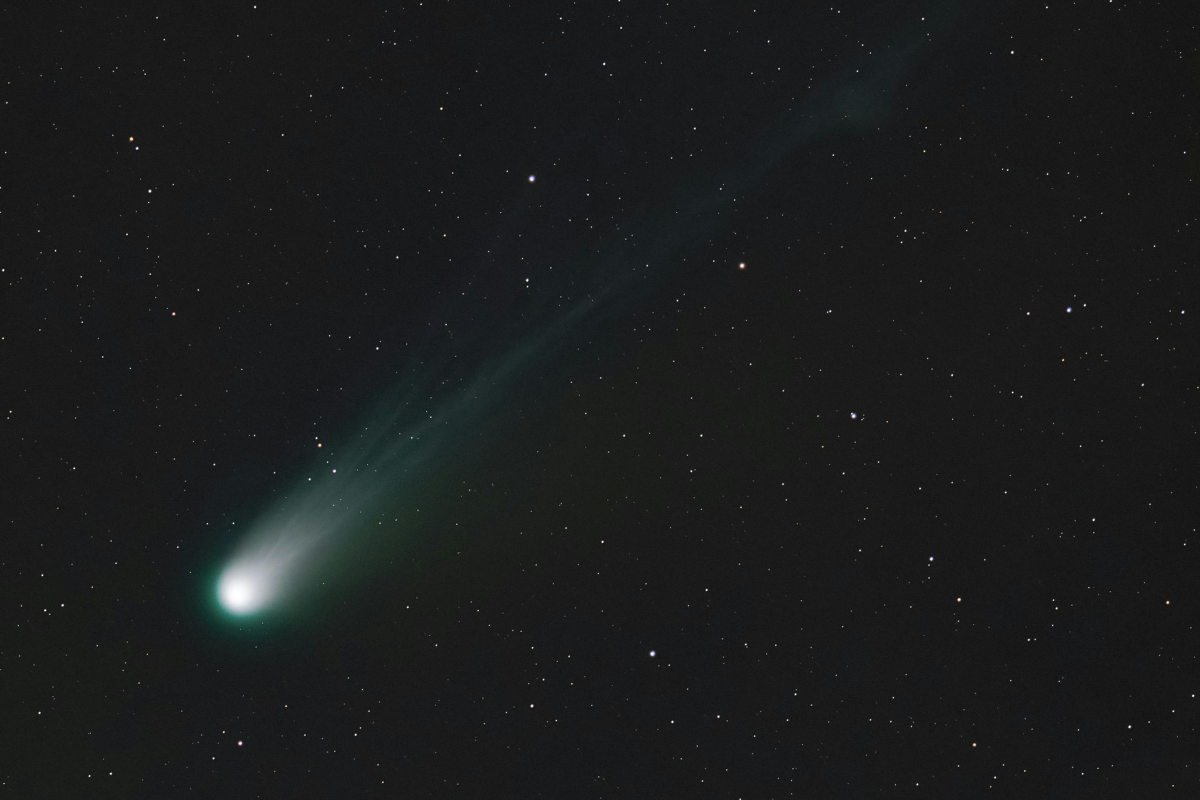Science
Mysterious Object 3I/ATLAS Approaches Sun, Sparks Debate

A mysterious interstellar object known as 3I/ATLAS is making its closest approach to the Sun today, October 29, 2025. This critical event, termed perihelion, occurs at approximately 11:47 Universal Time (UT) as the object passes at a distance of 1.36 Astronomical Units (AU), or about 203 million kilometres, from the Sun. While this milestone is noteworthy, the object will be largely hidden from Earth’s view, positioned directly opposite our planet. According to NASA, 3I/ATLAS will reappear by early December 2025.
The approach of 3I/ATLAS has reignited discussions within the scientific community, particularly surrounding the claims of Harvard astrophysicist Avi Loeb. Loeb, who has previously argued that 3I/ATLAS is more than just a comet, suggests that its perihelion represents a potential turning point. He posits that the intense solar heating may reveal the object’s true nature, potentially demonstrating technological behaviour.
In his latest essay on Medium, titled “The Acid Test of 3I/ATLAS at Perihelion,” Loeb outlines two possible outcomes from today’s event. The first scenario aligns with conventional expectations: if 3I/ATLAS is merely a natural comet, it may break apart due to the solar heating of approximately 770 watts per square meter. Loeb elaborated on this possibility, stating, “If it is a natural comet glued together by weak forces, its heating may break it up into fragments.”
Conversely, Loeb proposes a more startling hypothesis. He points to anomalies, such as the object’s high nickel content relative to iron, as indicators of a manufactured origin. He suggests, “If 3I/ATLAS was technologically manufactured, it might maneuver or release mini-probes.” This aligns with his previous assertions on his Medium blog, where he described the object as potentially being an “alien mothership.”
Loeb’s theories extend to the notion of these hypothetical mini-probes possibly sent towards Earth as gifts. He provocatively questions, “Will 3I/ATLAS send mini-probes towards Earth as Christmas gifts to humanity?” While this may seem speculative, his Galileo Project research team is actively monitoring for any unusual activity from anomalous objects. They are utilizing data collected by three observatories in the coming months, indicating a serious pursuit of evidence regarding these potential “gifts.”
The focus now shifts to December 19, 2025, when 3I/ATLAS is set to reach its closest approach to Earth, approximately 267 million kilometres away. In a recent interview, Loeb highlighted this date, emphasizing its significance just days before Christmas. He stated, “In the coming months, it will come closest to Earth on December 19th, just six days before Christmas.” Yet, he concluded with a cautionary note, expressing his hope that the object would not send any gifts.
As 3I/ATLAS completes its perihelion and continues its journey through the Solar System, the scientific community and the public alike must await its re-emergence in December. The critical date to watch remains December 19, when the object will pass closest to Earth. Will it reveal itself as a fragmenting comet, or will Avi Loeb’s team detect the anticipated “Christmas gifts”? Only time will tell as this interstellar mystery unfolds.
-

 Health3 months ago
Health3 months agoNeurologist Warns Excessive Use of Supplements Can Harm Brain
-

 Health3 months ago
Health3 months agoFiona Phillips’ Husband Shares Heartfelt Update on Her Alzheimer’s Journey
-

 Science1 month ago
Science1 month agoBrian Cox Addresses Claims of Alien Probe in 3I/ATLAS Discovery
-

 Science1 month ago
Science1 month agoNASA Investigates Unusual Comet 3I/ATLAS; New Findings Emerge
-

 Science4 weeks ago
Science4 weeks agoScientists Examine 3I/ATLAS: Alien Artifact or Cosmic Oddity?
-

 Science4 weeks ago
Science4 weeks agoNASA Investigates Speedy Object 3I/ATLAS, Sparking Speculation
-

 Entertainment4 months ago
Entertainment4 months agoKerry Katona Discusses Future Baby Plans and Brian McFadden’s Wedding
-

 Entertainment4 months ago
Entertainment4 months agoEmmerdale Faces Tension as Dylan and April’s Lives Hang in the Balance
-

 World3 months ago
World3 months agoCole Palmer’s Cryptic Message to Kobbie Mainoo Following Loan Talks
-

 Science4 weeks ago
Science4 weeks agoNASA Scientists Explore Origins of 3I/ATLAS, a Fast-Moving Visitor
-

 Entertainment4 months ago
Entertainment4 months agoLove Island Star Toni Laite’s Mother Expresses Disappointment Over Coupling Decision
-

 Entertainment3 months ago
Entertainment3 months agoMajor Cast Changes at Coronation Street: Exits and Returns in 2025









